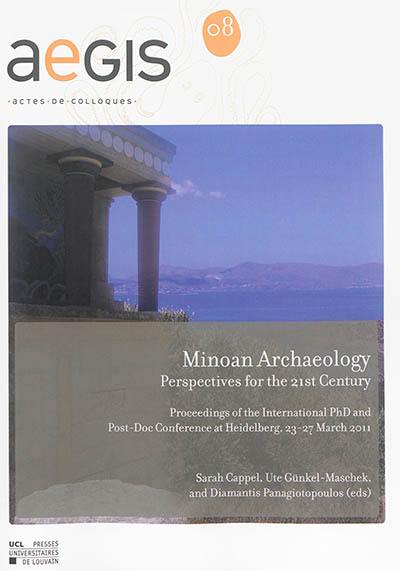
Collection(s) : Aegis
Paru le 29/01/2016 | Broché XI-382 pages
Professionnels
More than 100 years ago Sir Arthur Evans' spade made the first cut into the earth above the now well-known Palace at Knossos. His research at the Kephala hill as well as contemporary fieldwork at further sites on Crete saw the birth of a new discipline: Minoan Archaeology. Since these beginnings in the first decades of the 20th century, the investigation of Bronze Age Crete has experienced fundamental progress. The impressive wealth of new data relating to the sites and material culture of this Bronze Age society and its impact beyond the island's shores, the refinement of its chronology, the constant development of hermeneutical approaches to social, religious or political issues, and new methods and instruments employed for the exploration and conservation of the archaeological remains have shaped the dynamic trajectory of this discipline for more than a century. In March 2011 - exactly 111 years after the beginning of Evans' work at Knossos - a conference on Minoan Archaeology took place at Heidelberg with the aim to outline current trends and prospects of this scientific field, by setting up an open dialogue between renowned scholars and the young generation of researchers. The present volume brings together most of the papers presented during the conference. They are subsumed under six chapters highlighting current key issues in the study of Bronze Age Crete with a pronounced focus on the broad subject of society.
Diamantis Panagiotopoulos is Professor at the Institute of Classical Archaeology, University of Heidelberg. His research interests include the social structures of the Aegean civilizations, Aegean imagery, the interconnections between the Aegean and the Near East in the second millennium B.C., and ancient sealing practices. He is currently director of the interdisciplinary research program on Minoan Koumasa, Crete.
Ute Günkel-Maschek completed her doctoral thesis at the University of Heidelberg as a member of the graduate academy "Spaces, Images, Ways of Life in Ancient Civilizations". Her research interests lie in the study of Minoan and Mycenaean imagery and visual culture as expressions and factors of social and cultural realities.
Sarah Cappel studied Classical Archaeology, Egyptology and Ancient History at the University of Heidelberg and the University of Oxford. She is currently working on a doctoral thesis concerned with the emergence of administration on Minoan Crete.